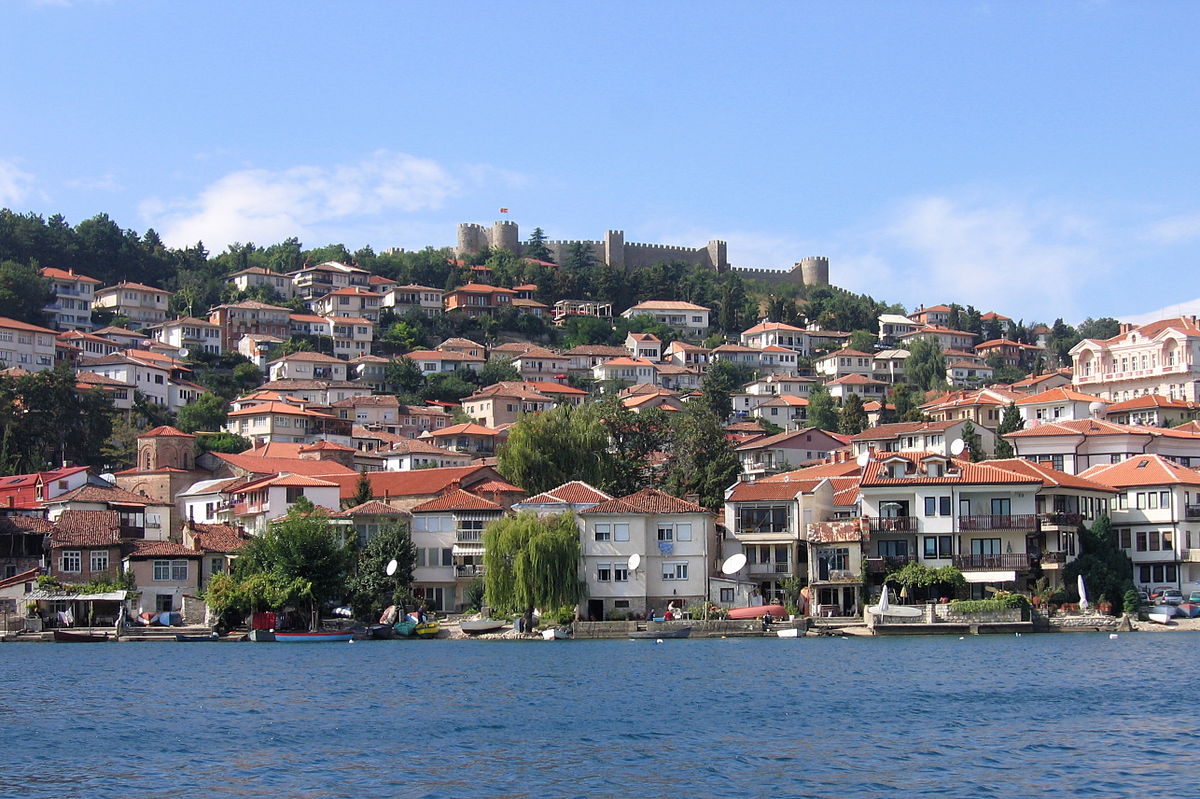
The soul of the Balkans, the cradle of Slovenian literacy, open-air museum, the center of Orthodox spirituality – these are just some of the terms that describe this city . It is located in the Former Yugoslav Republic of Macedonia, on the northeastern shore of Lake Ohrid and it represents the center of the Ohrid Archibishopric. Since 1980, Ohrid and Lake Ohrid are under the protection of UNESCO with their cultural and natural resources.
How long is the history of the town of Ohrid is evidenced by the fact that the coast of Lake Ohrid was inhabited by the Illyrians in ancient times. In the middle of the 4th century BC, Philip II of Macedonia conquered the city Lihnidos (former name of Ohrid), which was at that time heavily influenced by Hellenistic culture and arts. Due to the penetration of Christianity in this region, ancient temples were demolished and replaced with a number of monumental, early Christian churches. The city was under the Byzantine Empire in 6th century AC and the name of Ohrid was first mentioned in the protocol Of Constantinople Parliament in 879. The town is probably named after the Slovenian words "vo hrid", which means "on the hill", due to the fact that the old part of Ohrid is actually located on the hill. After the arrival of Clement and Naum, students of the brothers Cyril and Methodius, Ohrid became the center of Slovenian literacy, as well as the culture center of the Ohrid Literary School. At the beginning of the 11th century Ohrid was the central part of the Samuil’s Slovenian empire that the emperor encircled by a wall. However, after the fall of Samuil's empire, the city was conquered by the Byzantine emperor Basil II in 1018. Through the history, the town was in possession of the Byzantines and the Bulgarians. In the period from 1334 to 1394, the city was ruled by Serbian emperor Dusan and his heirs and successors. During this period in Ohrid were built most churches of which a great number has been preserved until today. After the death of Prince Marko (1394), Ohrid fell into the hands of the Ottomans who ruled for five centuries. It was not until the late 19th century that a statewide, strong revolutionary activity developed in order to prepare for the uprising. The Macedonians finally released themselves from the Ottomans authorities in 1912. Until the declaration of independence of the FYROM in 1991, Ohrid was under Serbian and Bulgarian rule and it also belonged to the Socialist Federal Republic of Yugoslavia.
Traces of these civilizations, as well as the many civilizations of the Old World, can be seen today in Ohrid, which puts it in line of one of the most ancient cities in the Balkans. Looking at archaeological sites (dating from the Neolithic times, Classical Period and the Middle Ages), ancient amphitheaters, baths, arenas and villas, Byzantine basilicas and shrines, as well as early Christian and medieval churches that are decorated by magnificent mosaics, frescoes and icons, may help in understanding the historical course of development of the city Ohrid and provide a great story about this divine city. Since Ohrid represented a significant religious center through the history, there were built 365 churches (one church for each day of the year). In the old part of the city there are many traditional houses built in authentic Balkan - oriental style, with beautiful balconies overlooking the Lake Ohrid . Besides, the streets of this part of town are embellished by the colorful bazaar with market, as well as various workshops of old crafts, workshops, carving, painting Byzantine icons, workshops for the production of leather, old Macedonian instruments etc. At the top of the village is located one of the oldest and best preserved fortress in Macedonia – "The Fortress of Emperor Samuil". Its other name is "the city of Ohrid", because the fortress, except for defense, was also used as a living space. It’s surrounded by massive walls and towers three kilometers long and the fortress offers one of the most beautiful views of the lake. In the Gallery of icons in Ohrid it can be seen the magnificent masterpieces from the 11th to the end of 19th century, among which are the best examples of the Byzantine icon painting. `Among the other sights it should be also mentioned the ancient theater, the Episcopal basilica, the Church of St. Sophia (crkva Sveta Sofija), built on the foundations of early Christian basilica, the Church of St. Clement - St. Panteleimon in Plaosik (crkva Sveti Kliment – Sveti Pantelejmon u Plaošiku), Monastery of St. Naum (Manastir Sveti Naum), as well as the Church of St. John (crkva Sveti Jovan), which is located on the cliff of the lake.A souvenir which tourists usually carry from Ohrid is Ohrid pearl that comes from endemic pearl shells that lives in Lake Ohrid. Jewelry made from Ohrid pearls are processed manually and it is very much appreciated in the world. The mode of production is known only to family members who made it and kept the secret since the twenties of the 20th century. Beautiful beaches of Lake Ohrid that attract every year more and more tourists mustn’t been forgotten: Gradište , Ljubaništa , Trpejca , Peštani , Ohrid and Sveti Stefan. Ohrid is therefore rightly called Macedonian jewel, since it attracts with its beauty, nature and a multitude of magnificent monuments that hide many stories from the long history of this city.
Geographical data:
Location: North-eastern coast of Lake Ohrid, in the southwest of the FYROM.
Coordinates: 41 ° 08' 24" N, 20 ° 48' 00" E.
Elevation: 717 m.
Distance from major Balkan cities:
- from Athens: 641 km
- from Banja Luka: 941 km
- from Belgrade: 614 km
- from Bucharest: 760 km
- from Zagreb 1003 km
- from Ljubljana: 1141 km
- from Podgorica: 289 km
- from Sarajevo: 517 km
- from Skopje: 171km
- from Sofia: 408 km
- from Tirana: 135 km
Prepared by: Milica Kocic

